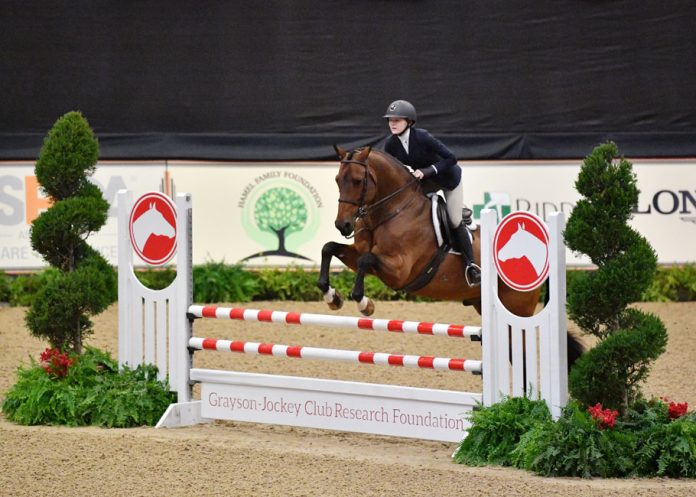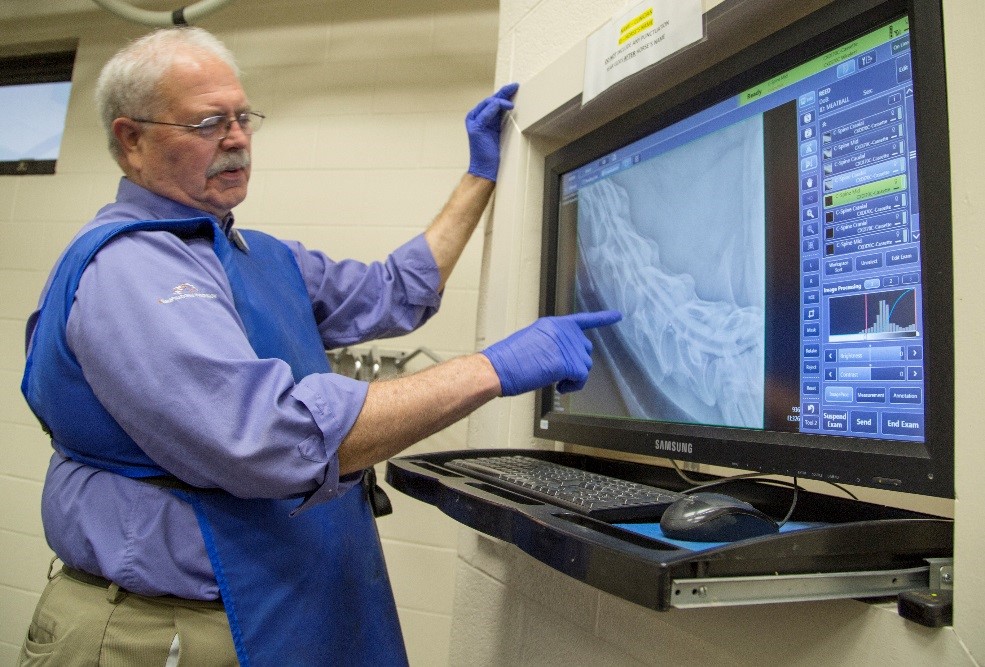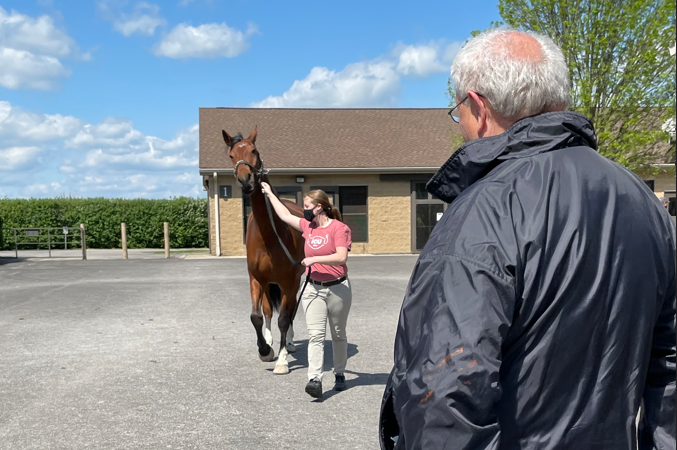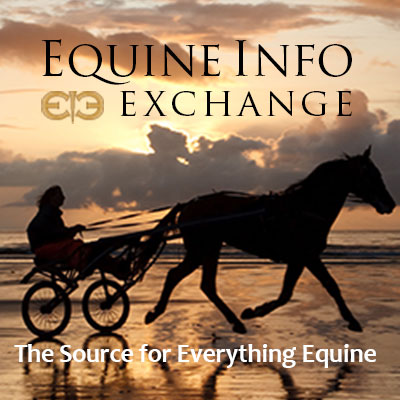
By SARAH WELK BAYNUM
The average horse owner may not believe that the Grayson-Jockey Club Research Foundation has anything to do with them. In actuality, there are countless horses whose lives have been saved as a direct result of the group’s research.
The Grayson-Jockey Club Research Foundation was founded in the 1940’s by a group of horsemen who originally donated their first equine research grant to the University of Pennsylvania. One of the projects that is currently being researched hits close to home for performance sporthorses—namely, spinal ataxia due to neurological diseases.
The group has funded research for a wide variety of breeds and disciplines—not just those in the Thoroughbred industry. Since 1940, the Grayson-Jockey Club has provided more than $42.3 million dollars in research money and underwritten over 437 projects across 48 universities.
This year, the Grayson-Jockey Club Research Foundation board of directors announced it will fund 11 new projects, along with 13 continuing projects, with an authorized expenditure of $2,455,164.
The Diagnosis Dilemma of Spinal Cord Diseases
Other than EPM, the definitive diagnoses for the underlying cause of spinal ataxia is extremely challenging.
Neurological diseases can often be career-ending diagnoses and causes for many horses. The two leading causes of spinal ataxia are cervical vertebral compressive myelopathy (CVCM, also known as Wobbler Syndrome), and neuroaxonal dystrophy / equine degenerative myeloencephalopathy (eNAD / EDM). These two diseases are the leading causes of spinal ataxia.
eNAD / EDM results from abnormalities of certain neurons in the spinal cord and brainstem. Horses are genetically predisposed to acquiring this disease. However, environmental triggers in the form of insufficient vitamin E are also required before you see clinical signs.
Horses with eNAD / EDM have varying symptoms, ranging from mild performance issues to severe debilitation. Clinical signs commonly include incoordination, not knowing where their feet are, having an abnormal leg stance that’s too wide or too close together, difficulty with tight turns, going up hills etc. are all common.
CVCM on the other hand, is a developmental defect of the neck vertebrae that causes narrowing of the spaces in the spine. Malformation of the spine, osteochondrosis, repetitive micro-trauma, and dietary factors like copper deficiency, excessive zinc, or high carbohydrate rations can result in CVCM. Like eNAD / EDM, horses are unsteady on their feet with this disease and the symptoms can range in severity. Neck stiffness, inability to correctly place their feet, toe dragging, and decreased range of motion are also common symptoms.

Unfortunately, CVCM and eNAD / EDM are hard to differentiate because they have such similar clinical signs. The definitive diagnosis of these diseases is challenging while the horse is alive, and is typically made after the horse is euthanized.
This is because a there is no way to truly diagnose these illnesses—there are no MRI machines large enough to accommodate the size of a horse’s neck. The current way veterinarians are diagnosing CVCM is with x-rays and CT scans.
While Warmbloods and Quarter Horses are both breeds prone to these diseases, they tend to show clinical signs quite differently. For example, Quarter Horses with eNAD / EDM will have an associated vitamin E deficiency and begin slowly showing incoordination at a young age, while Warmbloods will have a more sudden onset of incoordination and behavioral changes between 5-15 years old without this vitamin E deficiency.
Because of how challenging it is to diagnose these spinal cord diseases, it creates a stressful financial burden and a career or even life-ending decision for horse owners and trainers.
However, thanks to the current research project being done by the Grayson-Jockey Club Research Foundation, a study is being conducted that includes a highly specific and sensitive blood and spinal fluid test that can be used in conjunction with the current standard diagnostic testing.
New Developments
It is expected this study will greatly improve the diagnoses of these spinal cord diseases overall.
“Currently, a definitive diagnosis for both eNAD/EDM and CVCM can only be obtained after a horse has been euthanized. Imaging such as CT/myelogram can assist with diagnosing CVCM, but we are in need of biomarkers that can be measured in the blood or spinal fluid of horses that could help us determine which of these diseases is the most likely,” says Dr. Carrie Finno.
The investigators of this project include Dr. Finno of the University of California-Davis, Dr. Amy Johnson of the University of Pennsylvania-New Bolton Center, and Dr. Steve Reed of Rood and Riddle, KY.
Through an innovative approach, 367 proteins involved in neurologic diseases in humans were screened and defined in the blood (serum) and cerebrospinal fluid (CSF) from confirmed cases of CVCM or eNAD / EDM in Warmbloods and Quarter Horses.
Based on the results of this screening, the researchers hope to validate these findings using bench-side antibody tests from the initial sample and a group of additional confirmed cases of equine spinal cord disease.
The hypothesis is that the concentrations of five specific proteins will help them distinguish between the two diseases.
The expectation is that the concentration of certain proteins in the serum will be higher in CVCM horses as compared to those in eNAD / EDM horses and those in healthy horses. Because Quarter Horses and Warmbloods present these spinal cord diseases so differently, it’s also expected the protein concentration will be higher in eNAD / EDM Quarter Horses versus Warmbloods.

Preventing Spinal Cord Diseases
For owners who plan to breed or purchase horses susceptible to these spinal cord diseases, there are a few preventative measures they can take to decrease the odds or catch it early.
“One of the most important things that owners can do is to have a thorough prepurchase evaluation performed that includes a detailed neurologic evaluation by an experienced veterinarian. When importing horses from Europe, this should be carefully considered prior to purchase,” says Dr. Finno.
“For eNAD/EDM prevention, supplementation with vitamin E early in life (i.e. the first year) can prevent the disease in genetically-susceptible individuals. Unfortunately, most horses are older than one year of age when purchased or evaluated and vitamin E supplementation after that time frame has been demonstrated to not be effective in preventing clinical signs of disease.”
Because of this, insurance might be something concerned horse owners should look into.
“The discussion about insurance is an important one to mention, since eNAD/EDM is not treatable and CVCM treatments currently have limited success in a moderate to severely uncoordinated horse,” says Dr. Finno.
To learn more about the Grayson-Jockey Club Research Foundation, visit grayson-jockeyclub.org
This article originally appeared in the July 2024 issue of The Plaid Horse and is published here with permission.
There are more informative articles in our section on Health & Education.

































